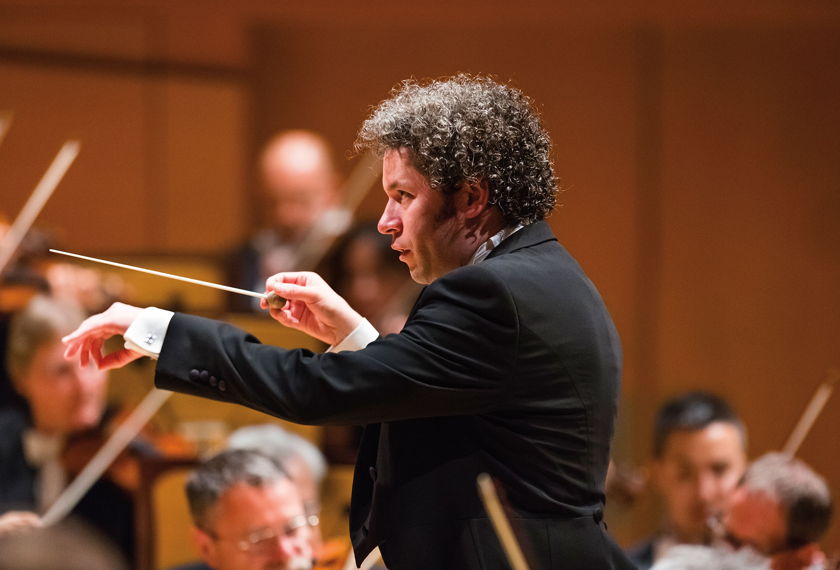
On Sunday afternoon, LA Phil Music Director Gustavo Dudamel conducted the second concert in a two-week series of programs featuring the four symphonies of Charles Ives and the last three symphonies of Antonín Dvořák.
The question we concluded our review of the first concert in the series with was whether Dudamel and his band could equal or surpass that concert. The answer is that they at least equaled it.
Ives’ Second Symphony, while in some ways comparable to the first in style, that is, the symphony still sounds late Romantic European, incorporates more popular tunes in every movement.
The first movement is played only by the strings for more than 50 bars before the horns enter with the Columbia, Gem of the Ocean theme, snippets of which Ives inserts in various places throughout the symphony. Still, the strings mostly dominate the first movement, which ends in a quiet restatement of the main theme by the oboe. The strings of the LA Phil sounded rich and lush, a rival even for the famed Philadelphia strings. But then, Dudamel is a string player.
The second movement (allegro) opens with a quotation by the woodwinds of Henry Clay Work’s abolitionist song Wake Nicodemus (“for the great Jubilee”) before moving on to quote other, mostly gospel, popular tunes before the strings come in and exchange melodic lines with the woodwinds. The LA Phil woodwinds were sharp and crisp and together with the strings showed why both are world-class ensembles.
The third movement (Adagio cantabile) quotes mostly from two sources, John Sweney’s gospel hymn Beulah Land, andSamuel Ward’s hymn tune Materna, which most will recognize as the tune from O Beautiful for Spacious Skies.
The final two movements, which were probably written as one, begin with Lento (maestoso) and then without pause move into Allegro molto vivace, not unlike the Brahms first symphony. In fact, Ives includes musical allusions to Brahms, Beethoven and Bach in the final movement with more teases of Columbia, Gem of the Ocean until the end of the Finale where the trombones explode into the full version while the trumpets play “Wake Nicodemus” (from the second movement). The symphony ends in a famous burst of dissonance.
The symphony No. 8 in G major, Op. by Dvořák has no program and doesn’t quote any particular tunes of the time; it’s just a 35-minute bundle of joyous expression that flows so naturally that it is no surprise that Dvořák composed and scored it in just a little more than two months. Unlike the ninth symphony, which celebrates the New World with references to gospel and Native American melodies, the Eighth is strictly Bohemian in its musical expression.
If the symphony is a joy to hear, it must also be a joy to conduct and play, and Dudamel seemed to feel that joy so much so that in a couple of places in the first and fourth movements where the tempo was already quite fast, he ramped it up even more. The effect was that the music seemed rushed, but it wasn’t a big distraction in an otherwise exciting performance. Kudos to the Phil’s principal flutist, Denis Bouriakov, for his spirited and lively playing of Dvořák’s wonderful scoring for the flute that evokes the fluttering of birds, especially in the first and fourth movements.
We await the concluding two concerts in which Dudamel will conduct the Phil in the last two symphonies of Ives paired with the last symphony of Dvořák. Stay tuned…
—Henry Schlinger, Culture Spot LA
For information about upcoming concerts, visit www.laphil.com.





